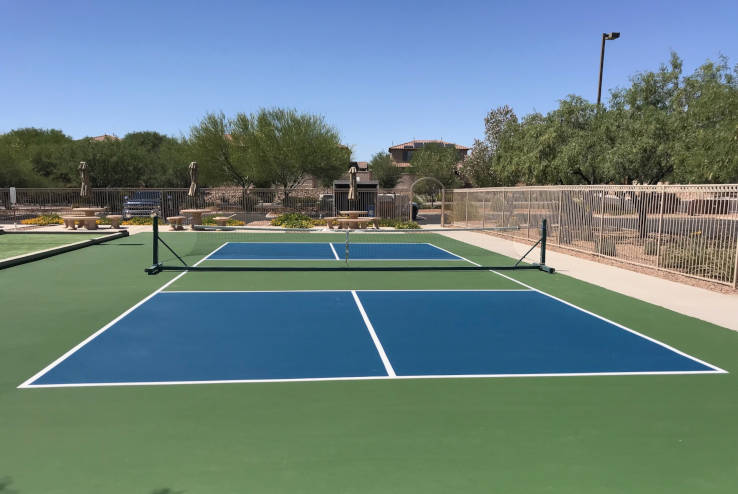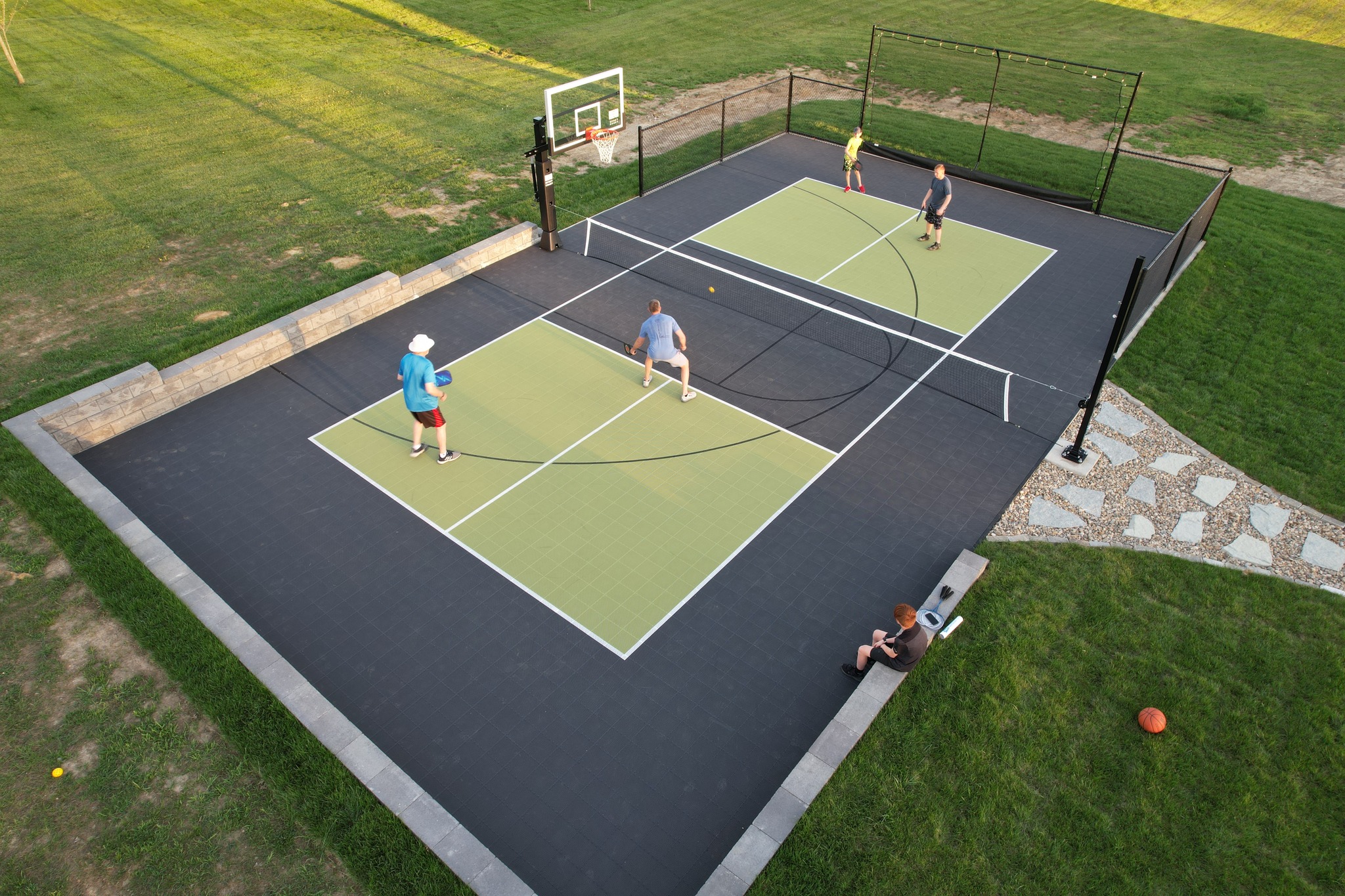Navigating Laws for Pickleball Court Building And Construction in Your Location
Constructing a pickleball court in your area needs a nuanced understanding of various neighborhood regulations, including zoning legislations, building licenses, and safety and security requirements. Involving with regional authorities and the community is critical for guaranteeing conformity and promoting assistance.
Understanding Local Zoning Regulations
When considering the construction of a pickleball court, recognizing local zoning laws is vital to ensuring compliance and avoiding prospective lawful concerns. Zoning laws determine exactly how land can be used and usually consist of specifications pertaining to recreational centers. These regulations can differ significantly by district, influencing aspects such as court positioning, noise, size, and lighting degrees.
Before launching building, it is vital to speak with the local zoning board or preparation division to ascertain the details laws that put on your residential property. Particular zones might restrict leisure tasks, while others might call for particular licenses or adherence to specific standards. It is also important to take into consideration obstacles, which identify how far frameworks need to be from residential or commercial property lines or various other buildings.
Additionally, exclusive growths, such as house owner organizations (HOAs), may enforce their very own regulations concerning the building and use pickleball courts. Recognizing these laws can protect against costly modifications or litigation down the line. Engaging with local stakeholders and community participants can provide beneficial insights and foster assistance for your job, making certain that it lines up with the area's assumptions and requirements.
Acquiring Necessary Building Permits
Just how does one navigate the intricacies of getting required structure licenses for a pickleball court? The process starts with comprehending local policies and demands set forth by community authorities. Generally, you will certainly require to send an in-depth site strategy that outlines the proposed court dimensions, materials, and design. This plan needs to follow zoning regulations and any details laws concerning entertainment centers.

As soon as permits are acquired, it is essential to stick to any examination routines and requirements throughout the construction phase. Maintaining communication with regional authorities will certainly facilitate a smoother authorization procedure and help stay clear of potential troubles. By completely preparing and comprehending the permitting landscape, you can effectively browse the intricacies involved in constructing a pickleball court while staying compliant with all local policies.

Assessing Environmental Influence
A thorough evaluation of environmental impact is necessary when preparing the construction of a pickleball court. This assessment aids determine prospective results on local communities, water resources, and neighborhood appearances. Key aspects to take into consideration consist of site selection-- guaranteeing that the court is not built on ecologically delicate land, such as wetlands or habitats for threatened types
Soil security and water drainage patterns need to be evaluated to prevent disintegration and water merging, which could adversely influence surrounding greenery and wildlife. Additionally, the choice of materials is important; going with eco-friendly and sustainable alternatives decreases environmental harm.
The application of efficient stormwater monitoring practices is an additional essential element, as it assists alleviate overflow and sedimentation. Engaging with regional ecological firms can give beneficial understandings into guidelines and finest techniques certain to your location.
Last but not least, community input can be beneficial in understanding any neighborhood environmental worries and promoting support for this contact form the project. By carrying out a complete environmental impact evaluation, stakeholders can make certain that pickleball court construction aligns with sustainable methods and contributes favorably to the community's eco-friendly health.
Following Safety And Security Criteria
Making certain conformity with security criteria is vital for the successful building and procedure of a pickleball court. Complying with established safety and security laws lessens the danger of accidents and injuries, ensuring a safe and secure environment for players.
Key safety standards consist of correct court dimensions, surface materials, and lighting requirements. The court needs to satisfy the official dimensions of 20 feet vast by 44 feet long for increases play, with proper buffer zones to stop injuries from errant rounds. Pickleball court construction. The surface area needs to be built from non-slip materials to boost grip and decrease the index possibility of falls
Furthermore, illumination needs to be ample for evening play, giving consistent illumination to avoid shadows that can impede visibility. Local building codes might likewise dictate specific requirements for secure fencing and net elevation to make certain player safety and security and prevent unauthorized access to the court location.
Regular examinations and upkeep are important to promote these standards with time. By prioritizing safety compliance, court owners not only protect players however likewise promote a favorable reputation within the neighborhood. This commitment to safety and security can urge better involvement and enjoyment of the sport, ultimately adding to its growth and sustainability.

Involving the Neighborhood in Planning
Community participation in the drawing board of pickleball court construction can substantially boost the task's general success. Involving neighborhood residents and stakeholders fosters a sense of possession and encourages collective decision-making, which can result in more comprehensive assistance for the initiative.
To successfully entail the community, organizers should initiate public meetings or workshops, giving a system for homeowners to articulate their opinions and preferences relating to area, layout, and amenities. Studies and responses forms can likewise be made use of to collect why not check here understandings from a broader target market, ensuring that diverse perspectives are considered.
Moreover, forming a neighborhood consultatory board can assist in continuous discussions and address concerns throughout the preparation process. This board can consist of agents from different demographics, such as regional schools, entertainment companies, and neighborhood watch, consequently magnifying neighborhood depiction.
Efficient communication is key; updates about the task need to be routinely shared via e-newsletters, social networks, or local publications. By focusing on community involvement, coordinators can cultivate excitement, alleviate potential opposition, and develop a pickleball center that really reverberates with neighborhood values and needs. This collective method not just improves the job yet likewise strengthens neighborhood ties.
Final Thought
Finally, browsing the complexities of pickleball court building and construction demands a thorough understanding of regional regulations, including zoning regulations, building licenses, and safety criteria. Conducting ecological evaluations is important to minimize ecological effect, while community interaction can enhance assistance for such projects. By adhering to these standards and fostering partnership, successful execution of pickleball courts can be achieved, advertising entertainment chances and neighborhood wellness. Proceeded diligence in these areas will certainly guarantee certified and lasting development.
Creating a pickleball court in your location requires a nuanced understanding of various local policies, including zoning regulations, structure authorizations, and safety and security criteria.When taking into consideration the building of a pickleball court, recognizing local zoning laws is crucial to making certain conformity and staying clear of possible legal concerns. By thoroughly preparing and understanding the permitting landscape, you can efficiently browse the intricacies included in creating a pickleball court while staying compliant with all local regulations.
In verdict, browsing the intricacies of pickleball court building and construction requires an extensive understanding of local regulations, including zoning regulations, structure licenses, and safety criteria. By adhering to these guidelines and fostering collaboration, successful execution of pickleball courts can be accomplished, promoting entertainment possibilities and community health.